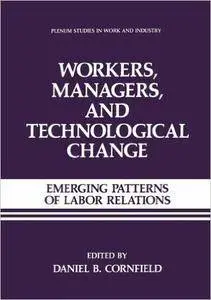Daniel B. Cornfield, "Workers, Managers, and Technological Change: Emerging Patterns of Labor Relations"
1987 | pages: 371 | ISBN: 146129018X | PDF | 12,3 mb
1987 | pages: 371 | ISBN: 146129018X | PDF | 12,3 mb
Workers, Managers, and Technological Change: Emerging Patterns of Labor Relations contributes significantly to an important subject. Technological change is one of the most powerful forces transforming the American industrial relations In fact, the synergistic relationships between technology and indus system. trial relations are so complex that they are not well or completely understood. We know that the impact of technology, while not independent of social forces, already has been profound: it has transformed occupations, creating new skills and destroying others; altered the power relationships between workers and managers; and changed the way workers learn and work. Tech nology also has made it possible to decentralize some economic activities out of large metropolitan areas and into small towns, rural areas, and other coun tries. Most important, information technology makes it possible for interna tional corporations to operate on a global basis. Indeed, some international corporations, especially those based in the United States, are losing their national identities, detaching the welfare of corporations from that of particu lar workers and communities. Internationalization, facilitated by information technology, has trans formed industrial relations systems. A major objective of the traditional American industrial relations system was to take labor out of competition.
My Links



